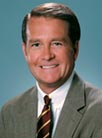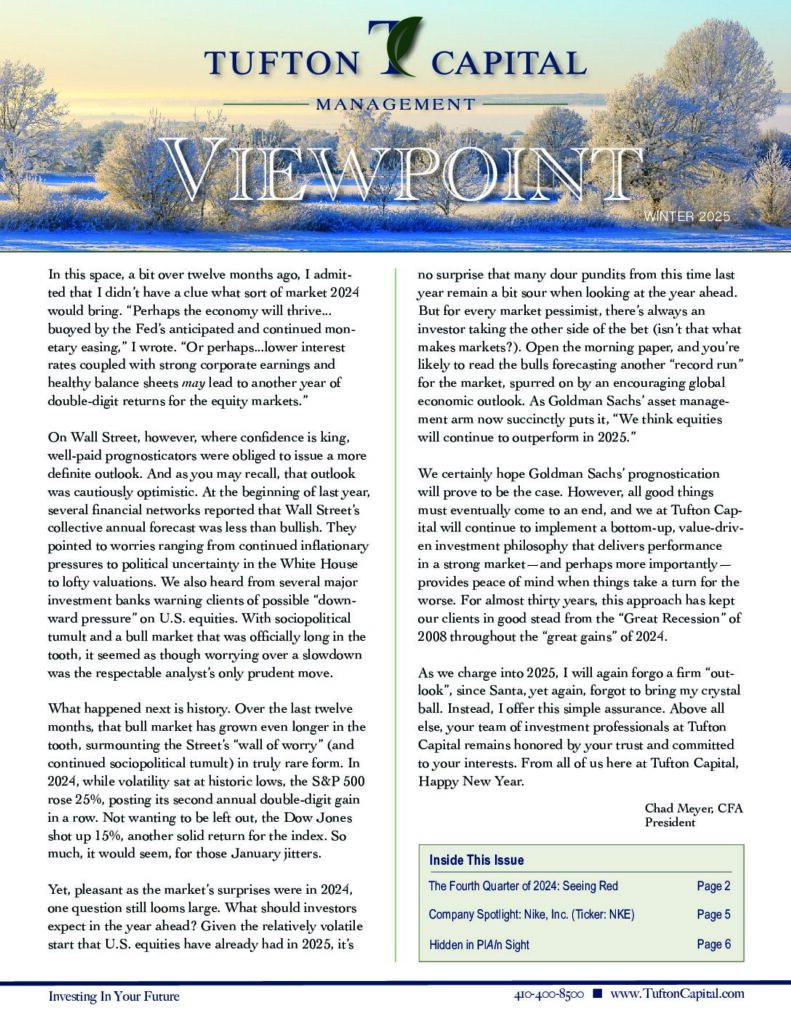 Put simply, it was a terrible summer for both the U.S. and European markets. The economic recovery that began in 2009 stalled, and the anticipated improvement in employment failed to materialize. Continued structural weakness in housing further retarded the overall recovery. Many other industries reported mixed results with one strong month followed by weakness in the next, resulting in a trendless quarter. Estimates for gross domestic product growth in the third quarter were halved from 3.6% at the start of the quarter to 1.8% at quarter-end.
Put simply, it was a terrible summer for both the U.S. and European markets. The economic recovery that began in 2009 stalled, and the anticipated improvement in employment failed to materialize. Continued structural weakness in housing further retarded the overall recovery. Many other industries reported mixed results with one strong month followed by weakness in the next, resulting in a trendless quarter. Estimates for gross domestic product growth in the third quarter were halved from 3.6% at the start of the quarter to 1.8% at quarter-end.
In addition, a political fight over extending the debt ceiling frightened American consumers, slowing purchasing and threatening the economy with a double-dip recession. Though the debt extension was resolved at the 11th hour, it was not without cost. Standard and Poor’s, an established independent bond rating agency, downgraded the creditworthiness of the U.S. government debt from AAA to AA+. While not of major financial significance to the U.S., it was embarrassing. However, these events did have broad-based negative effects, not only on the U.S. equity markets, which declined 13.9% in the quarter, but also on foreign bonds and equities. (more…)
 Every investor should strive to achieve the largest possible return on investment given a certain tolerance for risk. Although this axiom seems obvious, during periods of economic turbulence it is critical to focus on the risk side of the equation. How safe is the principal value of my account? Am I well positioned to weather a market correction and rebound fully when the investment climate turns favorable? Intellectually, we understand that long term appreciation and income are equally important. But, as markets fluctuate, falling prices can blur the investor’s vision and raise the question: Is my money safe?
Every investor should strive to achieve the largest possible return on investment given a certain tolerance for risk. Although this axiom seems obvious, during periods of economic turbulence it is critical to focus on the risk side of the equation. How safe is the principal value of my account? Am I well positioned to weather a market correction and rebound fully when the investment climate turns favorable? Intellectually, we understand that long term appreciation and income are equally important. But, as markets fluctuate, falling prices can blur the investor’s vision and raise the question: Is my money safe?
Our current economic difficulties stem from the financial crisis that began in 2008, when consumers, financial institutions and businesses recognized the dangers of the explosion of debt that accompanied the “housing bubble.” Not surprisingly, investors raced to the sidelines seeking safety for virtually every financial asset. Today we are replaying a different (more…)
 The economic recovery that began in Q1 2009 slowed unexpectedly in the first half of 2011. Reported growth of the GDP in Q1 2011 was only at an annualized rate of 1.9%, and a similar modest increase is anticipated for the second quarter. At the beginning of the year, a Bloomberg survey had consensus number for the quarter at 2.5%.
The economic recovery that began in Q1 2009 slowed unexpectedly in the first half of 2011. Reported growth of the GDP in Q1 2011 was only at an annualized rate of 1.9%, and a similar modest increase is anticipated for the second quarter. At the beginning of the year, a Bloomberg survey had consensus number for the quarter at 2.5%.
The shortfall caught the stock markets by surprise, and after reaching a high of 12,810 on April 29, the Dow Jones Industrial Index fell 3.1% to 12,414 to end the quarter. For the quarter, the Dow was up 1.4%, and up 8.6% for the first half. The S&P 500 was also up a hair, 0.22% for the quarter. Although there was a lot of volatility this quarter, stocks ended up where they started.
On the other hand, interest rates, sensing an economic slowdown, fell to new lows for this cycle. The 10 year U.S. Treasury note closed at a low of 2.86% on June 24th. Returns of short term Treasury notes (U.S. government securities with maturities less than a year) were even more startling. (more…)
 It’s difficult to read the financial news these days without noticing some storm clouds on the horizon. European debt woes, budget shortfalls everywhere, a lackluster economic outlook and falling home values represent a few of the problems the world will grapple with for the foreseeable future. Such uncertainty poses risk for all investments and contributes to the volatility in the market value of securities. On occasion, the volatility can feed on itself and lead to outright fear. Time and again, history has proven that at any single point in time markets are often far from rational and subject to the very real human emotions of fear and greed. We’ve seen exuberance and greed abound in market “bubbles” such as the internet and technology craze and numerous housing booms. Such excess has always been followed by “busts,” which is nature’s way of restoring balance. The good news is that eventually markets do find equilibrium and over the long haul sanity prevails. The absolute truth of the matter is that no one (more…)
It’s difficult to read the financial news these days without noticing some storm clouds on the horizon. European debt woes, budget shortfalls everywhere, a lackluster economic outlook and falling home values represent a few of the problems the world will grapple with for the foreseeable future. Such uncertainty poses risk for all investments and contributes to the volatility in the market value of securities. On occasion, the volatility can feed on itself and lead to outright fear. Time and again, history has proven that at any single point in time markets are often far from rational and subject to the very real human emotions of fear and greed. We’ve seen exuberance and greed abound in market “bubbles” such as the internet and technology craze and numerous housing booms. Such excess has always been followed by “busts,” which is nature’s way of restoring balance. The good news is that eventually markets do find equilibrium and over the long haul sanity prevails. The absolute truth of the matter is that no one (more…)
 The first quarter of 2011 was dominated by a series of events that eclipsed the financial markets as front-page news. An unexpected breakdown in the political order in North Africa spread throughout the Mideast, and several governments important to Western economic interests tottered on the brink of collapse by quarter’s end. Governments in Tunisia and Egypt fell and significant unrest spread to Bahrain, a small but important financial center responsible for the coordination of Middle Eastern oil settlements. We were surprised that by quarter’s end a Western coalition had begun offensive air operations against the repressive government of Libya and, under the supervision of NATO, the West was attempting to bring down the government of Muammar Gaddafi, the long-running leader of Libya.
The first quarter of 2011 was dominated by a series of events that eclipsed the financial markets as front-page news. An unexpected breakdown in the political order in North Africa spread throughout the Mideast, and several governments important to Western economic interests tottered on the brink of collapse by quarter’s end. Governments in Tunisia and Egypt fell and significant unrest spread to Bahrain, a small but important financial center responsible for the coordination of Middle Eastern oil settlements. We were surprised that by quarter’s end a Western coalition had begun offensive air operations against the repressive government of Libya and, under the supervision of NATO, the West was attempting to bring down the government of Muammar Gaddafi, the long-running leader of Libya.
The European banking system came under pressure as banks in Portugal, Greece, Italy, and Spain joined those of Iceland and Ireland in experiencing varying degrees of loss of confidence by depositors and members of the European Union. France and Germany, the wealthy nations in the E.U., although willing to aid the affected nations, offered bailout terms that were quite steep. At quarter’s end, the E.U. banking situation remained unresolved. (more…)
 This summer marks my thirtieth anniversary in the financial service industry, beginning at the old Maryland National Bank and ultimately as a senior executive at Ferris, Baker Watts. These two proud institutions, along with countless others, became victims to the ever changing landscape of the industry. Today, “Wall Street” and, in fact, the world’s financial system are dominated by comparatively few investment factories that offer every conceivable alternative investment and access to capital that was unthinkable thirty years ago. Such “progress” has paralleled the dynamic growth of the whole economy and contributed to the advances in our standard of living. Although it would be difficult to argue that we haven’t progressed, does that mean that we have greater clarity about the future? Has innovation and sophistication led to superior investment performance? Are the financial decisions we face any simpler or easier? The answer to these questions is a resounding no.
This summer marks my thirtieth anniversary in the financial service industry, beginning at the old Maryland National Bank and ultimately as a senior executive at Ferris, Baker Watts. These two proud institutions, along with countless others, became victims to the ever changing landscape of the industry. Today, “Wall Street” and, in fact, the world’s financial system are dominated by comparatively few investment factories that offer every conceivable alternative investment and access to capital that was unthinkable thirty years ago. Such “progress” has paralleled the dynamic growth of the whole economy and contributed to the advances in our standard of living. Although it would be difficult to argue that we haven’t progressed, does that mean that we have greater clarity about the future? Has innovation and sophistication led to superior investment performance? Are the financial decisions we face any simpler or easier? The answer to these questions is a resounding no.
Placing client interests first is the critical challenge in our industry. (more…)
 The economy and the financial markets performed well in the fourth quarter and for the full year 2010. The Standard and Poor’s 500 index increased 10.49% in the quarter and 14.79% for the full year, somewhat above the long-run average return for common stocks since records were established in 1926. Bonds also delivered positive returns, and the 10-year and 30-year treasuries provided returns of 7.9% and 8.7%, respectively.
The economy and the financial markets performed well in the fourth quarter and for the full year 2010. The Standard and Poor’s 500 index increased 10.49% in the quarter and 14.79% for the full year, somewhat above the long-run average return for common stocks since records were established in 1926. Bonds also delivered positive returns, and the 10-year and 30-year treasuries provided returns of 7.9% and 8.7%, respectively.
But in the fourth quarter of 2010, there was a significant divergence in the performance of stocks vs. bonds. The sharp fourth-quarter advance in stocks (10.49%) was not matched by treasury returns. In the final quarter of 2010, the ten-year treasury fell 5.6% and the thirty-year treasury declined 9.8%. The bond market appears to be reacting to a sharp rise in the projected fiscal 2011 federal deficit of $1.27 trillion ($1,270 billion), up from $480 billion in fiscal 2009. Calls for spending cuts, repeal of the health care program, and a contentious debate over increasing the government debt ceiling may have temporarily spooked the bond market. (more…)
 Pssst… if ever you have the chance to hear Stuart Varney speak, grab it! Emblematic of the “coat hangers” in our respective mouths, wife Kirby and I were presented that opportunity back in November by way of The Fund for American Studies’ 2010 Leadership Network.
Pssst… if ever you have the chance to hear Stuart Varney speak, grab it! Emblematic of the “coat hangers” in our respective mouths, wife Kirby and I were presented that opportunity back in November by way of The Fund for American Studies’ 2010 Leadership Network.
For those unfamiliar with the gentleman, he may be found daily serving as the anchor of Fox Business News’ morning show, Varney & Company… for those of you groaning at the mere mention of the word Fox, relax, Stuart has logged time with both CNN and CNBC. In fact, with Larry King’s recent retirement, Varney may be the dean of cable news hosts, having joined CNN’s Manhattan bureau at its genesis back in 1980. A graduate of the London School of Economics, his coverage of the 1987 stock market crash earned him the coveted Peabody Award for excellence in journalism. (more…)
 The third quarter of 2010 was a remarkable one for stocks and bonds. As is rarely the case, both performed exceptionally well. We do not anticipate this unusual trend will continue much longer. It is, however, very nice to have both major components of our clients’ portfolios performing so well at the same time.
The third quarter of 2010 was a remarkable one for stocks and bonds. As is rarely the case, both performed exceptionally well. We do not anticipate this unusual trend will continue much longer. It is, however, very nice to have both major components of our clients’ portfolios performing so well at the same time.
A major reason for the strong quarter in stocks was the shift in the consensus view of the economy. In the beginning of the quarter, most pundits (not us, I might add) were calling for a “double-dip” recession. This was a step backwards for the market. By the end of August, that view began to shift towards our belief that the economy would avoid another recession. Clearly, two steps forward. Sentiment shifted because the economic data overall began to turn slightly more positive. With this shift in sentiment, the market rallied. By the end of the quarter, the Dow Jones Industrial Average was almost back to 11,000. (more…)
One, two, three, four…
Hrmm!
One, two, (one, two, three, four!)
1966… The Beatles—most of my partners are way too young to remember the phenomenon they were, and the others were on to more serious things. For those of you of a certain age though, do you remember the song to which that count was the opening?
Let me tell you how it will be;
There’s one for you, nineteen for me.
‘Cause I’m the taxman,
Yeah, I’m the taxman. (more…)
The second quarter was punctuated by two major crises: the European financial crisis and the BP oil disaster. Both dramatically affected the market and both arguably had very little impact on our economy. When we look beyond these two headline-grabbing events, we see a continuation of the economic recovery. This market downturn should prove to be a buying opportunity. (more…)
Investment Income—The Growing Problem
 With bond and money market yields near all-time lows, investors who are trying to generate income feel like they are swimming upstream. Until recently, investors could always count on the bond market to provide them with a steady stream of consistent income. Yields were reasonably competitive, which made it easier for investors to live off of their investment income. The U. S. financial crisis and subsequent recession pushed interest rates to historically low levels.
With bond and money market yields near all-time lows, investors who are trying to generate income feel like they are swimming upstream. Until recently, investors could always count on the bond market to provide them with a steady stream of consistent income. Yields were reasonably competitive, which made it easier for investors to live off of their investment income. The U. S. financial crisis and subsequent recession pushed interest rates to historically low levels.
During this difficult period, however, investors could still manage to find competitive yields, as risk was still rampant. For example, there was a period of time in late 2008 and early 2009 when the consensus view was that municipalities would default on their obligations. Yields spiked to very attractive levels as hedge funds dumped their municipal bonds. Also, corporate bonds maintained high yields throughout the crisis as they were considered very risky. The spread between corporate yields and Treasury yields reached an all-time high.
With the economic recovery, the perceived risk of both corporate and municipal bonds has fallen dramatically. Thus, their yields are now in line with historical levels versus Treasury yields. For the first time in 50 years, many companies’ bonds are yielding less than their common stock. With bond yields at record lows and money market rates near zero, investors are facing the unappealing proposition of replacing their maturing 5% coupon bonds with new bonds yielding 3% or less.
Simply put, after years of growing income streams, investors’ income generated by bonds and money market funds is being systematically reduced. But what can investors do to fix this problem? The answer may lie in the equity market. Diversified stock portfolios can be constructed with yields in excess of 4%. Because of the recent correction combined with companies’ willingness to increase dividends, stock yields have increased. We are not proponents of making a huge asset allocation shift, but are in favor of shifting some money from bonds to high yielding stocks to increase the portfolio’s income. Taking this action may allow investors to swim with the income current instead of against it.
—Dave Stepherson
 The U.S. economy has continued the recovery that began late in 2009. We expect first quarter 2010 growth to be around 3.5%. The recovery is currently being stimulated by improvements in manufacturing, specifically automobiles, as well as a general rebuilding of inventories throughout the economy. Inventories declined as much as 15% at the trough of the recession. First quarter economic results will be adversely affected by the awful weather conditions that affected the entire northern half of the United States, but we believe the next step in the recovery will be in the housing sector and should occur this spring.
The U.S. economy has continued the recovery that began late in 2009. We expect first quarter 2010 growth to be around 3.5%. The recovery is currently being stimulated by improvements in manufacturing, specifically automobiles, as well as a general rebuilding of inventories throughout the economy. Inventories declined as much as 15% at the trough of the recession. First quarter economic results will be adversely affected by the awful weather conditions that affected the entire northern half of the United States, but we believe the next step in the recovery will be in the housing sector and should occur this spring.
Representing about 10% of the economy, housing is influenced by seasonal economic adjustments that, by reason of the weather, sent confusing signals. Existing home sales are at an annual rate of 5,020,000 units, up from a low of 4,610,000 in the second quarter of 2009. Though still below optimal levels, we remain optimistic, as low mortgage rates (about 5% for a 30-year fixed rate) should continue to stimulate housing demand. In addition, the home buyer’s tax credit, which expires in April, continues to help. Hopefully, the second quarter, which is typically a much stronger quarter for housing, will lead to a growing consensus that the recovery is gaining momentum. (more…)
 Upon picking up my oldest children at BWI for Easter Weekend, it was with some amusement that I listened to both complain on the way home about the amount they were paying in taxes. Proving the apple falls not far from the tree, the oldest son’s observation remains unprintable—let’s just say that the visual equivalent might be akin to sharing one bunk with 3 inmates at the Fallsway Apartments, aka the Baltimore City Jail.
Upon picking up my oldest children at BWI for Easter Weekend, it was with some amusement that I listened to both complain on the way home about the amount they were paying in taxes. Proving the apple falls not far from the tree, the oldest son’s observation remains unprintable—let’s just say that the visual equivalent might be akin to sharing one bunk with 3 inmates at the Fallsway Apartments, aka the Baltimore City Jail.
With recent developments emanating from the Augean Stables 35 miles south of here, that inmate number is likely to increase exponentially. In fact, if Einstein is to be believed—the definition of insanity is doing the same thing over and over again and expecting different results—some might conclude the inmates are running the asylum. And if the notion of Einstein intimidates, a highly recommended alternative would be F.A. Hayek’s The Road to Serfdom. But I digress…
Quite simply, we are on an unsustainable path. Matthew Continetti, Associate Editor of The Weekly Standard, had this to say in the lead editorial of magazine’s March 15, 2010 issue:
As it stands, Social Security, Medicare, Medicaid, and debt service constitute more than 60 percent of all government expenditure. The number is set to rise more than 75 percent within a decade. Left unchecked, these four items will consume the entire federal budget by midcentury.
American Enterprise Institute scholar Andrew Biggs estimates the federal government would have to impose an immediate and permanent 30 percent increase on every tax in order to balance its books—in 25 years.
 The 4th quarter was another good one for the stock market, marking its third consecutive advance. As a leading indicator for the economy, the market is signaling investors the recovery is real. Where there are still plenty of skeptics, it would appear to us the improving economic data is forming a base upon which a meaningful, sustainable economic recovery can occur.
The 4th quarter was another good one for the stock market, marking its third consecutive advance. As a leading indicator for the economy, the market is signaling investors the recovery is real. Where there are still plenty of skeptics, it would appear to us the improving economic data is forming a base upon which a meaningful, sustainable economic recovery can occur.
For the quarter, the S&P 500 returned 6.01%. You may recall the 2nd and 3rd quarters returned 15.94% and 15.56%, respectively. From the index’s trough on March 9, 2009, the S&P 500 has returned 67.8%, one of the strongest nine-month periods in the history of the index. The Dow Jones Industrial Average returned 59.8% over the same time period. For the full year 2009, the S&P 500, Dow and Nasdaq returned 26.50%, 22.60% and 43.91%, respectively. After an abysmal 2008, these results were well-received.
As the stock market began its recovery, the bond market moved in the opposite direction. In the first half of 2009, we saw interest rates move to historic lows as the government continued to work to grease the skids of the credit markets. As these programs began to have a positive effect, interest rates began moving higher. By the end of the year, those rates were much higher. The 10-year Treasury started 2009 yielding 2.20% and ended it yielding 3.79%. As you will recall, when yields rise, bond prices fall. Most Treasuries provided investors with a negative return for the year. Because of the perceived risks in Corporate and Municipal bonds during the year, their yields did not drop as much. The result for investors was that bonds produced positive returns for the year. The Barclays Corporate Index returned 5.24% for the year and the Barclay’s Municipal Index returned 7.61%. (more…)



